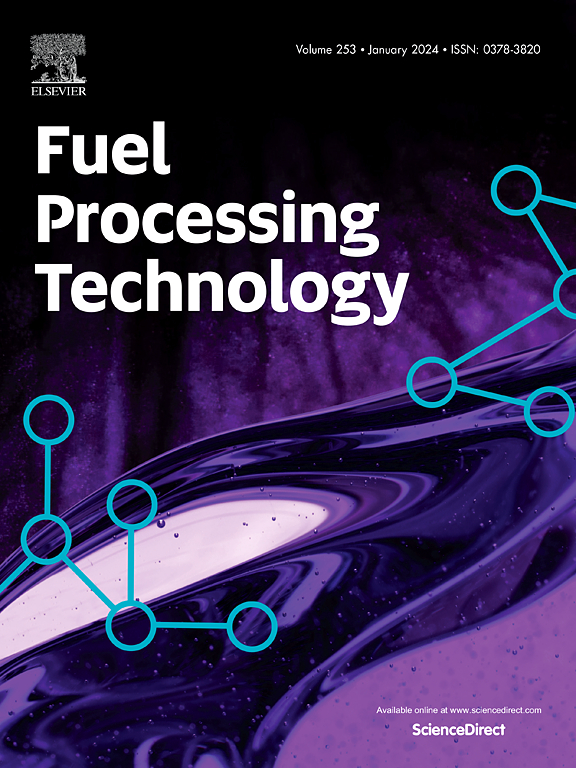碳纳米管修饰bifeo3 - tio2异质结增强人工固氮入氨
IF 7.7
2区 工程技术
Q1 CHEMISTRY, APPLIED
引用次数: 0
摘要
氮和水的光催化合成氨由于其可持续生产的潜力,是一种很有前途的能源开发途径。在本研究中,BiFeO3-TiO2-CNT纳米复合材料通过简便的溶胶-凝胶和水热法(含和不含碳纳米管)制备,有效地将N2转化为氨,这是一种现代、可持续的氢基燃料。优化后的复合材料bfo - 10% TiO 2 -CNT在环境条件下的产氨率为150.8 μmol/g·h,优于其他配比的产氨率。碳纳米管包合物增强了光催化性能。BiFeO3-TiO2-CNT纳米复合太阳能材料的优越性主要体现在碳纳米管增加了光催化剂的表面积和与N2分子的有效相互作用以及对光子吸收的积极影响。bifeo3 - 10% TiO2-CNT纳米复合材料的光催化性能明显优于其他组合。优化后的复合材料比单独使用BiFeO3或TiO2产生更多的NH3。一种被提出的电荷转移机制解释了氨太阳能燃料中氮固定的增强。本文章由计算机程序翻译,如有差异,请以英文原文为准。

Enhanced artificial nitrogen fixation into ammonia via CNT-modified BiFeO3-TiO₂ heterojunction
Photocatalytic ammonia synthesis from nitrogen and water is a promising avenue for energy development due to its potential for sustainable production. In this study, the BiFeO3-TiO2-CNT nanocomposite, produced via a facile sol-gel and hydrothermal method (with and without CNTs), effectively converts N2 into ammonia, a modern, sustainable and H-based fuel. The optimized composite, BFO-10 %TiO₂-CNT, exhibited a remarkable ammonia production rate of 150.8 μmol/g·h under ambient conditions, exceeding the performance of other ratios. CNT inclusion enhanced the photocatalytic performance. The superiority of BiFeO3-TiO2-CNT nanocomposite solar energy materials was explained in terms of CNT's ability to increase the photocatalyst surface area and effective interaction with N2 molecules and the positive effect on photon absorption. The BiFeO3–10 %TiO2-CNT nanocomposite showed significantly better photocatalytic performance than other combinations. This optimized composite produced more NH3 than BiFeO3 or TiO2 alone. A proposed charge transfer mechanism explains the enhanced N2 fixation into ammonia solar fuel.
求助全文
通过发布文献求助,成功后即可免费获取论文全文。
去求助
来源期刊

Fuel Processing Technology
工程技术-工程:化工
CiteScore
13.20
自引率
9.30%
发文量
398
审稿时长
26 days
期刊介绍:
Fuel Processing Technology (FPT) deals with the scientific and technological aspects of converting fossil and renewable resources to clean fuels, value-added chemicals, fuel-related advanced carbon materials and by-products. In addition to the traditional non-nuclear fossil fuels, biomass and wastes, papers on the integration of renewables such as solar and wind energy and energy storage into the fuel processing processes, as well as papers on the production and conversion of non-carbon-containing fuels such as hydrogen and ammonia, are also welcome. While chemical conversion is emphasized, papers on advanced physical conversion processes are also considered for publication in FPT. Papers on the fundamental aspects of fuel structure and properties will also be considered.
 求助内容:
求助内容: 应助结果提醒方式:
应助结果提醒方式:


